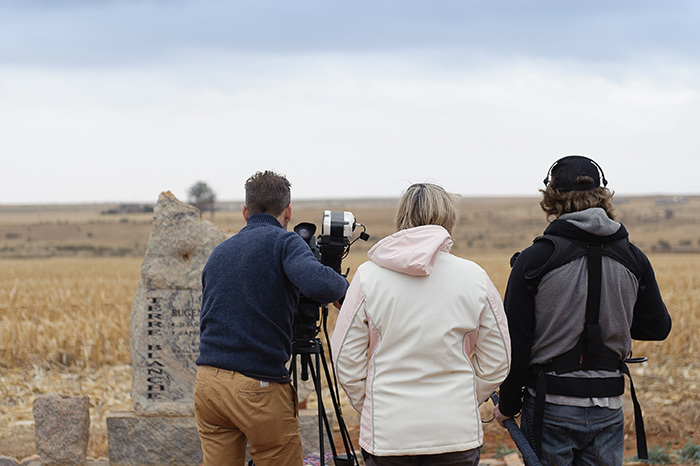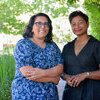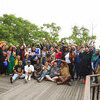1994: The Bloody Miracle screening at UCT
22 August 2014 | Story by Newsroom
A local documentary that explores an often untold story '“ of those who tried to derail South Africa's first democratic elections, pushing the country to the brink of civil war '“ will be screened at UCT on Tuesday 26 August, with thanks to the Nelson Mandela Foundation (NMF). 1994: The Bloody Miracle was co-directed by lecturer in the Centre for Film and Media Studies Meg Rickards (together with cinematographer Bert Haitsma) and produced by Paul Egan, managing consultant at the UCT Unilever Institute of Strategic Marketing.
"We had a notion of the 'Third Force's' involvement in stirring up violence, but had no idea of the extent of the meddling by the state's security apparatus," said Rickards in an interview with the NMF. "We hadn't realised that South Africa's military intelligence offered support not only to Inkatha, but also to ANC members, in an effort to stoke conflict and destabilise the country."
The film marks the directors' confrontation with little-known facts surrounding the lead-up to South Africa's first democratic elections in 1994, and features candid interviews with the likes of hit squad commander Eugene de Kock, former president FW de Klerk and current President Jacob Zuma about the extent of state complicity, Chris Hani's youngest daughter Lindiwe Hani, and the grandson of Albert Luthuli, Daluxolo Luthuli.
"What we decided right up front was that we wouldn't interview any experts '“ no academics, historians, journalists or political analysts," said Haitsma in the same interview. "We stuck to our guns on that one, however tempting it was to find an expert voice to make sense of everything. We think what makes 1994 special is that the story is for the most part told from the perspective of the characters. We were constantly taken aback by the openness and eagerness with which so many people told us of their experience. Many of their stories have been denied for too long."
1994: The Bloody Miracle
When: Tuesday 26 August from 17h00-19h30
Where: Lecture Theatre 3, PD Hahn Building
Watch the trailer
Film synopsis
As South Africa celebrates the 20th anniversary of the advent of democracy, it's hard to believe the Mandela miracle very nearly didn't happen. In an orgy of countrywide violence and intimidation, certain groups of people were intent on derailing the country's first free elections which ended apartheid. At the time, South Africa was on the brink of catastrophe and civil war.
Much of what happened has been overlooked or conveniently forgotten. In 1994: The Bloody Miracle, those people who were responsible for countless deaths and widespread mayhem speak about how they very nearly brought South Africa to its knees as the world looked on helplessly.
Using the most dramatic archival footage, the plot to make South Africa ungovernable and deny Nelson Mandela his place in history is laid bare. Intercutting the stories of central characters, against a timeline of the events leading up to the elections, the film builds up to a natural climax: 27 April 1994. Bombs blasted right up to election morning: the country came perilously close to never voting at all.
The elections represent a turning point in the nation's psyche, a pinnacle of hope. Yet, in many ways, the pain and violence of the past continue to haunt us.
1994 is a chilling look at what some hard men were willing to do to thwart democracy, and the uneasy peace they have made with the much-vaunted Rainbow Nation, in their own different ways.
 This work is licensed under a Creative Commons Attribution-NoDerivatives 4.0 International License.
This work is licensed under a Creative Commons Attribution-NoDerivatives 4.0 International License.
Please view the republishing articles page for more information.










